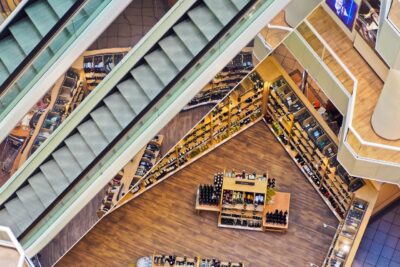IoT (Internet of Things) is the gateway to endless actionable insights for a retail business. From purchase histories to shopping preferences, it unlocks vital business insights.
According to an International Data Corporation survey, IoT global spending is on track to reach 805.7 billion USD before 2023 ends. Automation and boost in efficiency models are two critical drivers of IOT for retail.
No wonder geofencing marketing companies are ruling the roost. Today, over 90% of smartphones promise seamless compatibility for IOT devices. Undeniably, things look sharp for 2024. From self-checkouts to cold chain monitoring, here’s a look at the six best industry use cases.
IMAGE: PEXELS
1. Self-Checkout Is A Hit
Checkouts in a store are a marathon. It’s one of the most talked about shopping hassles. Why? Because no one likes a queue. This is where the Internet of Things helps. With automated self-checkout, brands can add to the positive in-store experience of customers. Here’s how it works:
- Customers finish shopping and approach the IOT counter, where the tool reads smart tags on items.
- The customer’s mobile app is charged for the amount to pay.
- Upon confirmation, the merchant receives the payment. No wasting time waiting in a queue. It is also beneficial for the merchant not having to hire a cashier.
2. Geofencing Complements Physical Advertising
Geofencing campaigns are another great use case for IoT in retail. Brands like GAP have already demonstrated this. They placed geofencing ads around bus stops, with shelters running physical GAP ads. The American clothing brand saw the popularity of the mobile game “Words with Friends” among its customers.
So, they decided to display exclusive coupons from the nearest stores during the gameplay. As people waited for the bus and played the game, they saw discounts on the latest styles from the nearest GAP store. Reportedly, the geofencing campaign led to a click-through rate of 0.93, compared to an industry standard of 0.20.
3. Smart Shelves-A Game Changer For Warehouses
Retail stores often run into problems due to the wrong product shelving. It messes with inventory management, too, as retailers fail to track out-of-stock items. With smart shelves, things can never go wrong. Smart shelves have in-built weight sensors and scannable RFID tags.
Thus, it helps easily track items on display and other items in storage. In short, your inventory is constantly updated. Besides, these intelligent shelves connected to the central system send notifications before an item goes out of stock. Also, it shares periodical updates like customer preference for a particular item.
4. Cold Chain Monitoring
It’s always tricky dealing with perishable items like food or medicines. IoT can make a difference. Thanks to various sensors and devices that seamlessly track real-time temperature, pressure, and humidity. In turn, it elevates food quality and product safety for a brand.
5. Predicting In-Store Wait Time
Retailers couldn’t have imagined a traffic controller in physical stores even a few years back. Today, the scenario has changed for the better. IoT sensors promise a slew of advantages:
- It helps effectively track customer footprints.
- It helps anticipate store crowds.
- It offers valuable insights to enhance store layouts.
- It can significantly reduce customer wait time.
For customers, it helps to find out the number of people ahead in a line. Knowing things beforehand helps build patience and ranks a brand high on customer experience.
6. Seamless In-Store Navigation
GPS works fine outdoors. But what about inside a retail store, especially a big one? Say hello to IOT! Stores fitted with IOT devices can initiate a communication system using Wi-Fi, special tags, and Bluetooth.
It’s a befitting use case for IoT in retail. With interactive maps, customers can reach their desired items faster. It also provides them with intelligent suggestions. Thus, you spend less time hunting for things and have more fun shopping.
IoT – Closing Thoughts
Undoubtedly, the future of retail looks bright with IoT. As retailers turn towards embracing innovation, IoT is a step ahead to boost customer experience. Sure, the sensors and other devices are a pricey affair. But they promise the best ROI ever.
IMAGE: PEXELS
If you are interested in even more technology-related articles and information from us here at Bit Rebels, then we have a lot to choose from.


COMMENTS